How to Quickly Apply Biometrics, Biofeedback, and Situational Awareness for Immersive Environments
Contributed By DigiKey's North American Editors
2023-05-26
Creating immersive virtual reality (VR), mixed reality (MR), augmented reality (AR), and extended reality (XR) environments for the metaverse is a complex task. To help create these environments, designers can benefit from using biometrics to understand users’ reactions and physical condition, biofeedback to engage with the user, and situational analysis to understand the surroundings. Biometrics can be implemented with a high-sensitivity pulse oximeter and a heart rate sensor. Biofeedback can be provided via audio content or using haptics for touch-based interactions. Finally, three-dimensional (3D) vertical cavity side-emitting laser (VCSEL) time-of-flight (ToF) sensors, capable of recording at 30 frames per second (fps), can continually map the environment and support situational awareness.
The metaverse is a rapidly evolving opportunity. Designers can be pressed to quickly develop and integrate the needed array of low-power sensing and feedback technologies based on discrete solutions, while still meeting time-to-market and development cost constraints. In addition, many metaverse devices are battery powered, making low-power solutions a necessity.
To address these challenges, designers can make use of integrated solutions that support high-sensitivity pulse oximeter and heart-rate sensing, provide high-efficiency class D audio and haptic feedback and utilize a VCSEL-based 3D ToF sensing solution that can detect object positions and sizes with a high level of granularity—even under strong ambient light conditions.
This article reviews the operation of pulse oximeter and heart rate sensors, looks at how class D amplifiers can provide high quality and very-low-power audio feedback, and presents an array of power-efficient ICs from Analog Devices for biometrics, biofeedback, and situational awareness, along with associated evaluation boards.
Sensing biometric conditions
A photoplethysmogram (PPG) measures changes in blood volume at the microvascular level and is often used to implement a pulse oximeter and heart rate monitor. A PPG uses lasers to illuminate the skin and measure the changes in light absorption (or reflection) at specific wavelengths. The resulting PPG signal includes direct current (DC) and alternating current (AC) components. The constant reflectivity of skin, muscle, bone, and venous blood results in the DC signal. The heart rate pulsation of arterial blood is the primary source of the AC signal. More light is reflected in the systolic (pump) phase than in the diastolic (relaxation) phase (Figure 1).
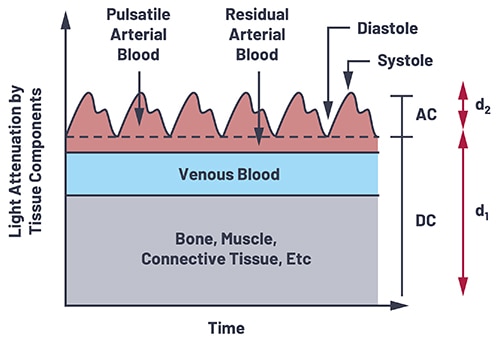 Figure 1: The PPG signal in pulse oximetry includes both DC and AC components related to elements like tissue structure and arterial blood flow, respectively. (Image source: Analog Devices)
Figure 1: The PPG signal in pulse oximetry includes both DC and AC components related to elements like tissue structure and arterial blood flow, respectively. (Image source: Analog Devices)
The ratio of the pulsating (AC signal) blood to the non-pulsating (DC signal) blood flow in a PPG signal is the perfusion index (PI). By using PIs at different wavelengths, it’s possible to estimate the level of blood oxygen saturation (SpO2). Designing the PPG system to maximize the PI ratios increases the accuracy of the SpO2 estimates. The PI ratios can be increased through improved mechanical design and higher precision sensor implementations.
Transmissive and reflective architectures can be used for PPG systems (Figure 2). A transmissive system is used on areas of the body where light can easily pass through, like earlobes and fingertips. These configurations can realize a 40 to 60 decibel (dB) increase in the PI. In a reflective PPG, the photodetector and LED are placed side by side. Reflective PPGs can be used on the wrist, chest, or other areas. The use of a reflection design reduces the PI ratios and requires the use of a higher performance analog front-end (AFE) on the sensor. Spacing is also critical to avoid saturating the AFE. In addition to the mechanical and electrical design considerations, the development of software to properly interpret the PI signals can be a significant challenge.
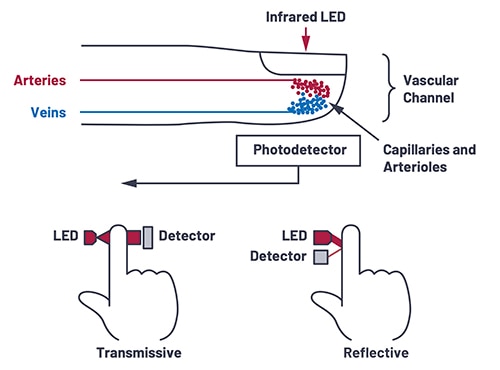 Figure 2: A single IR LED can be used in a simple pulse oximeter and heart rate sensor but using multiple LEDs can produce a higher quality output signal. (Image source: Analog Devices)
Figure 2: A single IR LED can be used in a simple pulse oximeter and heart rate sensor but using multiple LEDs can produce a higher quality output signal. (Image source: Analog Devices)
An additional challenge when designing PPG systems is the need to account for any motion of the user while the measurement is being taken. Motion can cause pressures that can change the width of the arteries and veins, affecting their interaction with light, which changes the PI signals. Since both the PPG signals and typical motion artifacts are in similar frequency ranges, it’s not possible to simply filter out the effects of the motion. Instead, an accelerometer can be used to measure motion in order to enable canceling it out.
Monitoring SpO2 & heart rate
For designers needing to implement SPO2 and heart rate monitoring, Analog Devices offers the MAXREFDES220# reference design that provides much of what’s required to quickly prototype a solution, including:
- The MAX30101 integrated pulse oximetry and heart rate monitor module. This module includes internal LEDs, photodetectors, optical elements, a high-performance AFE, and other low-noise electronics plus ambient light rejection.
- The MAX32664 biometric sensor hub, designed for use with the MAX30101. It includes algorithms to implement SPO2 and heart rate monitoring, and it has an I2C interface for communication with a host microcontroller unit (MCU). The algorithms also support the integration of an accelerometer for motion correction.
- The ADXL362 three-axis accelerometer that consumes less than 2 microamperes (µA) at a 100 Hertz (Hz) output data rate, and 270 nanoamperes (nA) when in motion-triggered wake-up mode.
Class D for audio feedback
Audio feedback can provide an opportunity for powerful interactions with users. Or it can diminish the quality of the experience if the sound quality is poor. The micro speakers used in typical wearable and VR/MR/AR/XR environments can be challenging to use effectively and efficiently. One way to address this is to use a high efficiency, boosted Class D smart amplifier with an integrated boost converter and voltage scaling for higher efficiency at low output power. The integrated smart amplification function can increase the sound pressure level (SPL) as well as the bass response for richer and more realistic audio.
Designing smart amplification is a complex process, but amplifiers are available with integrated digital signal processors (DSPs) that automatically implement smart amplification and provide improved speaker performance, including current-voltage (IV) sensing to control output power and prevent speaker damage. With smart amplification, micro speakers can safely deliver higher SPLs and increased bass response. Integrated solutions are available that provide a 6 to 8 dB boost to SPL, and that extend the bass response down to one-fourth of the resonant frequency (Figure 3).
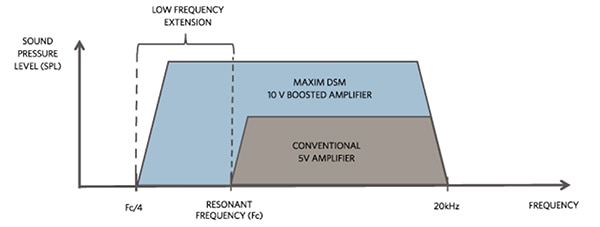 Figure 3: Smart amplification with a Class DG design can safely and efficiently support higher SPL levels and extended bass response in micro speakers. (Image source: Analog Devices)
Figure 3: Smart amplification with a Class DG design can safely and efficiently support higher SPL levels and extended bass response in micro speakers. (Image source: Analog Devices)
Class D amplifier for audio feedback
The MAX98390CEWX+T is a high-efficiency Class D smart amplifier with an integrated boost converter and Analog Devices’ Dynamic Speaker Management (DSM) for superior sound that can support high-quality and efficient audio feedback. This amplifier includes voltage scaling for high efficiency at low output power. In addition, the boost converter operates with battery voltages down to 2.65 volts and has an output that is programmable from 6.5 to 10 volts in 0.125-volt increments. The boost converter includes envelope tracking to adjust the output voltage for maximum efficiency, along with a bypass mode for low quiescent current operation.
This boosted amplifier can deliver up to 6.2 watts into a 4 Ohm (Ω) speaker with only 10% total harmonic distortion plus noise (THD+N). It includes an integrated IV sense to protect the speaker against damage and supports higher SPLs and lower bass response.
To speed development with the MAX98390C, Analog Devices offers the MAX98390CEVSYS# evaluation kit. The kit includes the MAX98390C development board, an audio interface board, a 5 volt power supply, a micro speaker, a USB cable, DSM Sound Studio software, and MAX98390 evaluation software (Figure 4). The DSM Sound Studio software has a graphical user interface (GUI) that implements DSM in a simple three-step process. It also includes a seven-minute demonstration of the impact of the DSM software using the micro speaker.
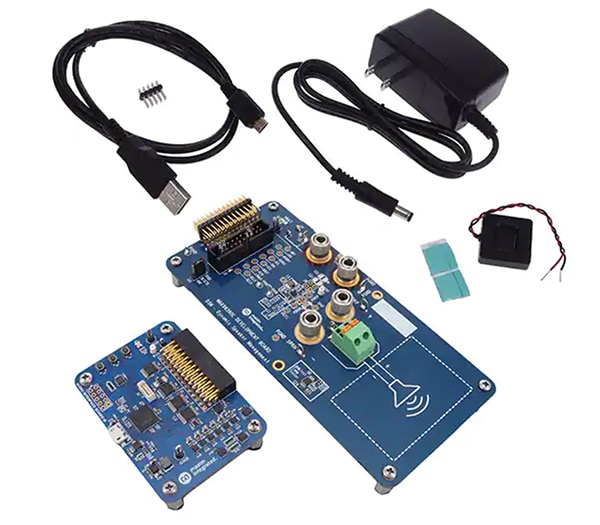 Figure 4: The MAX98390CEVSYS# kit includes all the hardware and software needed to develop Class D audio feedback systems. (Image source: Analog Devices)
Figure 4: The MAX98390CEVSYS# kit includes all the hardware and software needed to develop Class D audio feedback systems. (Image source: Analog Devices)
Haptics for tactile feedback
Designers of systems that rely upon tactile feedback to engage users can turn to the MAX77501EWV+ high-efficiency controller driver for piezoelectric actuators. It’s optimized for driving up to 2 microfarad (µF) piezo elements and generates a single-ended haptic waveform of up to 110 volts peak to peak (Vpk-pk) from a supply voltage of 2.8 to 5.5 volts. It can operate in memory playback mode with prerecorded waveforms or use real-time waveforms streamed from an MCU. Multiple waveforms can be dynamically allocated to the on-board memory, which can serve as a first-in, first-out (FIFO) buffer for real-time streaming. Full system access and control, including fault reporting and monitoring, is supported with the integrated serial peripheral interface (SPI). It also allows playback after a 600 microsecond (µs) startup time from shutdown. To ensure high efficiency and maximum battery life, this controller driver has an ultra-low-power boost architecture with a standby current of 75 μA and a 1 μA shutdown current.
To explore the capabilities of the MAX77501 piezo driver, designers can use the MAX77501EVKIT# evaluation kit, which is fully assembled and tested. The kit allows for easy evaluation of the MAX77501 and its ability to drive a large haptic signal through a ceramic piezo actuator. The kit includes Windows-based GUI software for exploring all the features of the MAX77501.
ToF for situational awareness
Situational awareness can be an important aspect of VR/MR/AR/XR environments. The AD-96TOF1-EBZ evaluation platform supports this aspect by including a VCSEL laser transmitter board and an AFE receiver board for developing ToF depth perception functions (Figure 5). By pairing this evaluation platform with a processor board from the 96Boards ecosystem or Raspberry Pi family, designers are provided with a baseline design that can be used for developing the software and algorithms for application specific ToF implementations with high levels of 3D granularity. The system can detect and range objects under strong ambient light conditions and has multiple range detection modes for optimized performance. The included software development kit (SDK) provides OpenCV, Python, MATLAB, Open3D, and RoS wrappers to enhance flexibility.
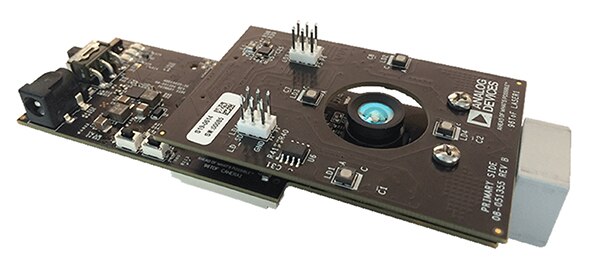 Figure 5: High-performance ToF situational awareness systems can be developed using the AD-96TOF1-EBZ eval platform. (Image source: Analog Devices)
Figure 5: High-performance ToF situational awareness systems can be developed using the AD-96TOF1-EBZ eval platform. (Image source: Analog Devices)
Conclusion
Creating immersive and interactive environments for the metaverse is a complex and time-consuming task. To speed up the process, designers can turn to a complete range of compact and energy efficient solutions from Analog Devices, including development and evaluation platforms for biometric sensing, biofeedback, and situational awareness systems.
Recommended Reading

Disclaimer: The opinions, beliefs, and viewpoints expressed by the various authors and/or forum participants on this website do not necessarily reflect the opinions, beliefs, and viewpoints of DigiKey or official policies of DigiKey.










